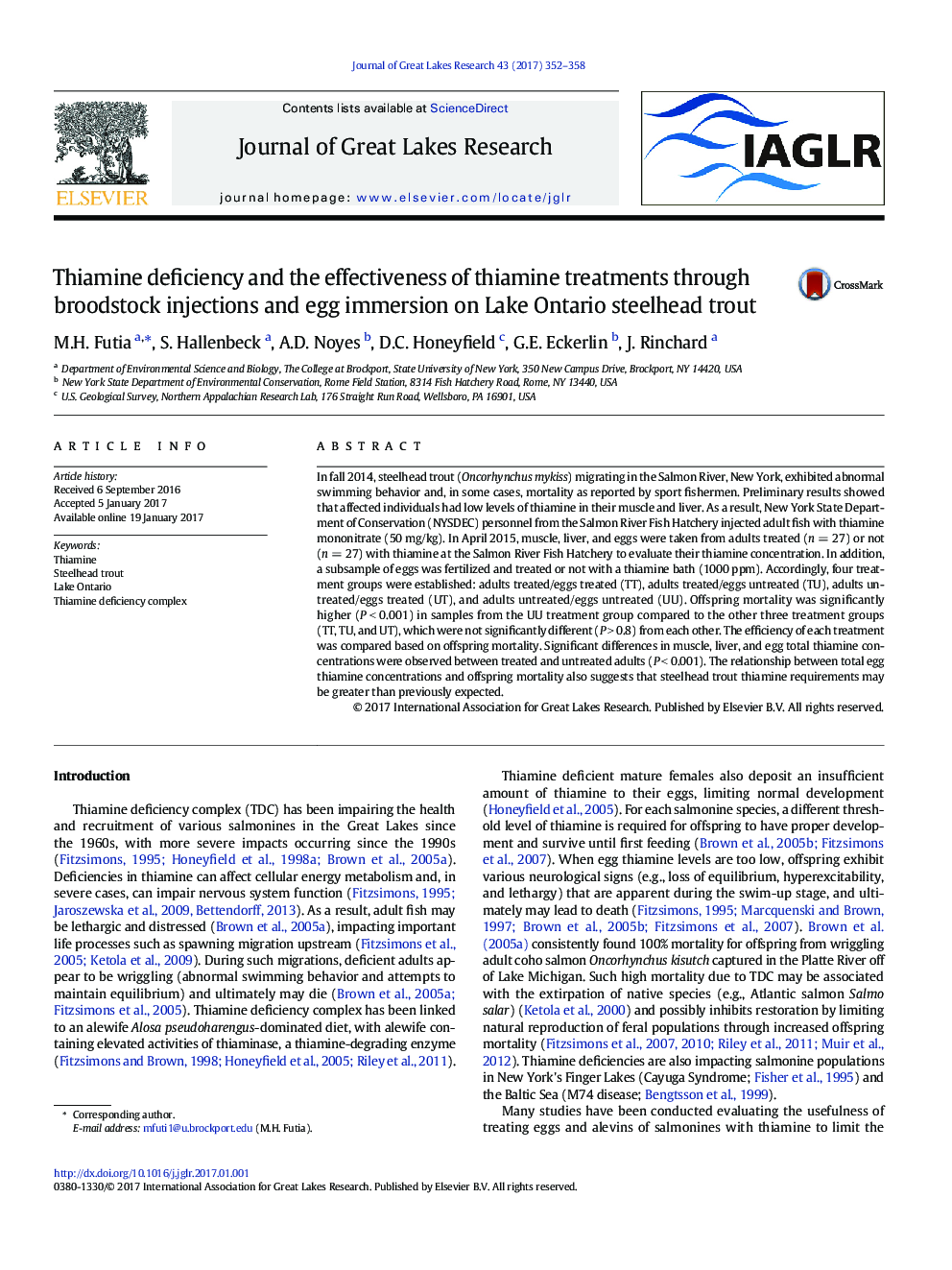| Article ID | Journal | Published Year | Pages | File Type |
|---|---|---|---|---|
| 5744732 | Journal of Great Lakes Research | 2017 | 7 Pages |
Abstract
In fall 2014, steelhead trout (Oncorhynchus mykiss) migrating in the Salmon River, New York, exhibited abnormal swimming behavior and, in some cases, mortality as reported by sport fishermen. Preliminary results showed that affected individuals had low levels of thiamine in their muscle and liver. As a result, New York State Department of Conservation (NYSDEC) personnel from the Salmon River Fish Hatchery injected adult fish with thiamine mononitrate (50 mg/kg). In April 2015, muscle, liver, and eggs were taken from adults treated (n = 27) or not (n = 27) with thiamine at the Salmon River Fish Hatchery to evaluate their thiamine concentration. In addition, a subsample of eggs was fertilized and treated or not with a thiamine bath (1000 ppm). Accordingly, four treatment groups were established: adults treated/eggs treated (TT), adults treated/eggs untreated (TU), adults untreated/eggs treated (UT), and adults untreated/eggs untreated (UU). Offspring mortality was significantly higher (P < 0.001) in samples from the UU treatment group compared to the other three treatment groups (TT, TU, and UT), which were not significantly different (P > 0.8) from each other. The efficiency of each treatment was compared based on offspring mortality. Significant differences in muscle, liver, and egg total thiamine concentrations were observed between treated and untreated adults (P < 0.001). The relationship between total egg thiamine concentrations and offspring mortality also suggests that steelhead trout thiamine requirements may be greater than previously expected.
Keywords
Related Topics
Physical Sciences and Engineering
Earth and Planetary Sciences
Earth and Planetary Sciences (General)
Authors
M.H. Futia, S. Hallenbeck, A.D. Noyes, D.C. Honeyfield, G.E. Eckerlin, J. Rinchard,
